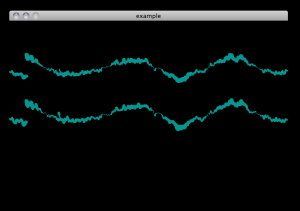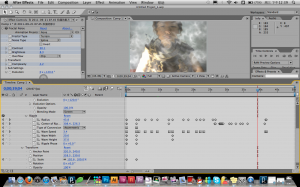Why We Need Things” by Mihaly Csikszentmihalyi
I always believe in the great picture that technology is supposed to help benefit human being even there is some serious side effects. After reading Why We Need Things” by Mihaly Csikszentmihalyi, I think there exist a huge hole in my belief. First of all, I underestimate how we depend on every technology outcome. The reason is simple: I take them for granted.
The article gives a strong point to demonstrate the power of objects. Technology in the world stabilizes the society and life. In one-way or another, objects do change our view rapidly. Today, a person can project personal value into physical things like high-tech product as an economic pointer. It sounds like a reasonable infer. It is, however, not always correct. Another issue we talk about is how feeling change our view into physical things. When we put feeling and personal attachment into daily words, it is very easy that feeling change our view into physical things.
It is very interesting to know about the thought that we need solidity things to prove ourselves, or strength our memory, exhibit beauty. We have digital cameras to record and put on Facebook so that people will notice and give response; makeup to stress a very abstract value of beauty and fashion; Discipline is a solution to go as the article described. But it’s not enough. We need more than self-discipline. Based on a speech from Harvard opening class: Positive psychology, the self-discipline we have right now is what we are going to have. It will be too difficult to change one’s view of personal value. What we need to do is put out attention into other activity. But what should it be?
Still, it’s not always the case like what article said, or at least there are some minor question I do not understand completely. If an Olympic athlete enjoys marathon and keeps running, what exactly is the object that athlete focus on? It occurs to me that we are focusing our attention in only technology that we almost forget intrinsic value of ourselves. It is true that we have something labeled as “priceless” like emotion or thoughts and they do not always connect to objects but related to human instead. Is the whole article just prove itself: that the more attachment you notice something, the more you engage in the activity like trying pulled out the answer of how objects affects human?
The Computer Revolution Hasn’t Happened Yet” Alan Kay
”You don’t need a browser.” said by Alan Kay.
I was impressed by Kay’s object-oriented idea because it was 1998.His ideas are very innovative. He discussed some of the technique problems and programming at that time. I guess he is actually delivering speech to student learning computer science so he encourage us to think outside the box of existing technique. Some of the words is not comprehensive to people who are not familiar with programming like C++ story and sentence ”The worst is making an operating system for ten years that appears to work.” More or less, I think he pointed out that we have to look back and understand what we were doing and focus on the concept of future deign.
Design should provide a good service to human welfare instead of a compromise of existing technique. These problems including problem like JAVA failed people to imagine what the great picture is have caused some conflicts in user experience. But it’s there and survived. This aspect is a reflection on designing progress. The more liberated one worrying about practical form, the more one limited by the constraints. So I think he gave many example to think and deal with another way. His diagram of Two ways to look at something is quite interesting. There seems to exist a fuzzy zone between abstract idea and data structure and procedure. It’s quite common in our design, too. Sometimes, we think in a straight mind but actually not. I think designing something original is quite difficult and need more time to fix technique problem until everything is organized in integrity. Unfortunately, we probably will not have enough time during at school but will have to deal it in long run.
“The Design of Everyday Things”, Donald Norman
Some of the example from Norman is quite interesting. We do facing with a lot of new products that are both interesting and confusing. But reading His article makes me wonder where should the development of interaction goes. How should I learn from these what he called “bad design.” Back in my country, industrial design or product design is separated from design field but in engineering or science department because companies and school value practical matter like function and marketing. It just occur to me that interface has related to too many field of studies. If I want a artificial intelligence robot, I might need computer science knowledge or a group of programmer to implement it. So, what exactly should we focus on when studying interface? Norman has a lot of books studying on daily object like how these objects give user different experience like emotional response. Of course there are other things he present in the example.
A good design is a design that hardly being notice. That is, it perfectly blends in the natural scenario. It explains the concept of “technology should benefits human kind.” However, the word benefit can have different meaning when we face different people. Is there exists a protocol for human that perceive object and decide to react in same response? Probably not. Everyone is unique in some way. Instead, we give instruction and learned how to use it.
For instance, I never understand which switch will correspond to the square gas stove since there is no sign to know. So we learn to use it. When do learning become an obstacle using daily stuff? Or it merely conflicts what we expected to do so that we called it “bad design.”I think there is a strict definition of “function.” If people expect something to be normally functional, this object should fit under the definition and be carefully evaluated. No one will expect a leaking mug. So do I. It can be interesting but not in good shape. If someone found the leaking spot, he/she might start to fix the hole or simple change another cup. If the leaking has some meaning like a face to smile and can communicate to user in an agreement between them, then the hole will viewed as meaningful and be viewed it is a good design. It will not go under the definition “It’s should have function.” It’s the definition of what it should be use decide the meaning of design. But who decide whether an object can interact with its user perfectly? Market? User? This is very confusing when some “good” design has been viewed as “bad” design because people evaluate stuff from different angle. I believe majority consensus plays a role on this part. To me, definition of design does not become clear but just complicated.





Comments!